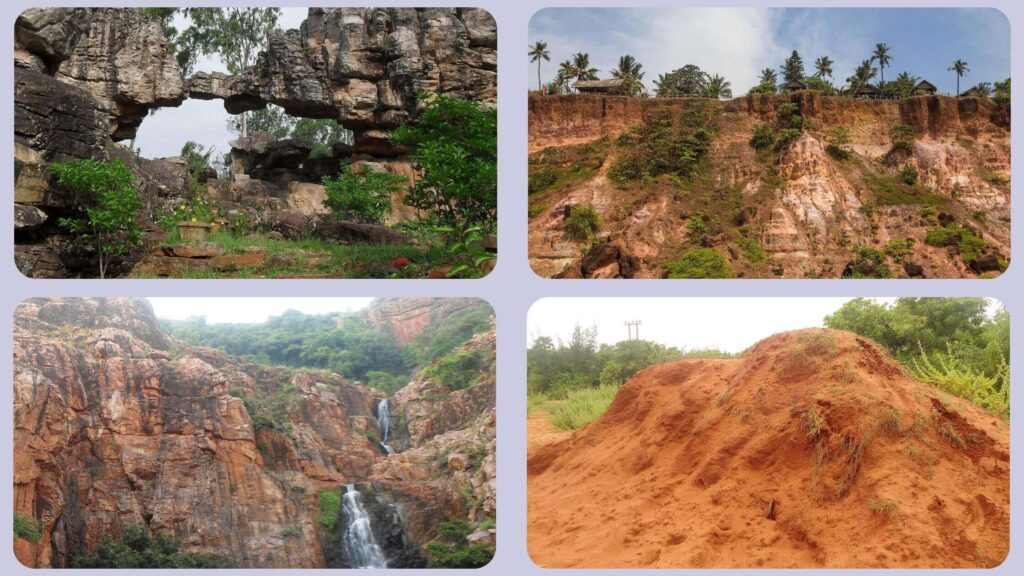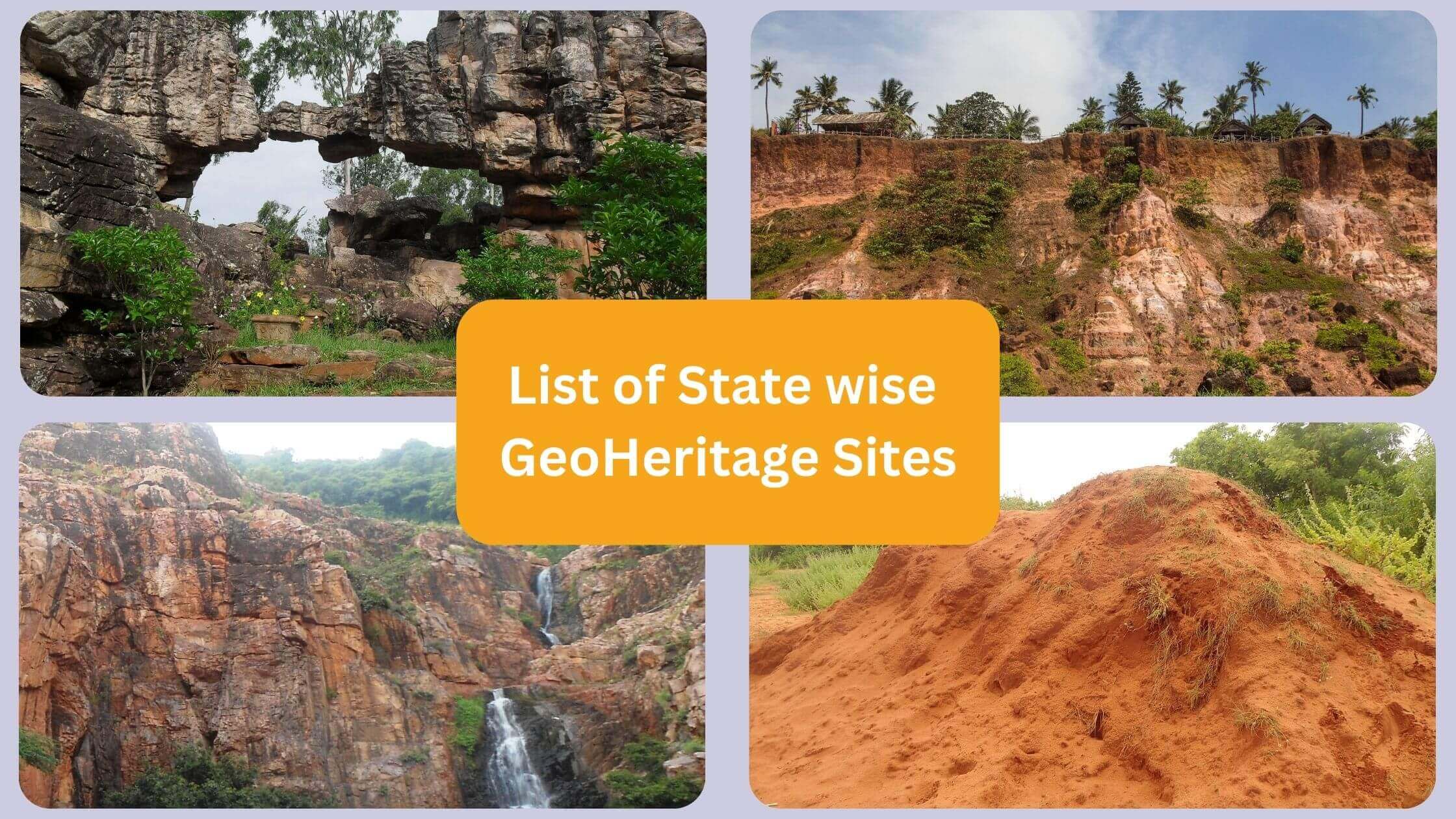The Geological Survey of India was established to investigate and evaluate India’s mineral resources. GSI has gradually identified a number of geospatial sites across the country, including laterite formations, volcanic barites, natural geologic arches, and fossil forest parks. This website offers essential information about the geology and natural history of India. In order for future generations to understand the nation’s geological legacy and its contributions to science, it is essential to protect and preserve these sites.

What is Geoheritage sites?
Sites with “georelicts and phenomena, sections of stratigraphic type, geological structures and geomorphic landforms, including caves, natural rock sculptures of national and international interest; and includes such part of land adjoining the site’ as may be necessary for their preservation or for access to such sites.
What is Georelics?
Any artifact or piece of geological significance or interest, such as sediments, rocks, minerals, meteorites or fossils, is referred to as a georelic. Georelics can be purchased by the GSI (Geological Survey of India) “for its preservation and maintenance”. The Geological Survey of India (GSI), under the Ministry of Mines, was established in 1851 to investigate and evaluate the nation’s coal and other mineral resources through regional surveying.
There are 32 geo heritage sites in India, spread across 13 states.
1. ANDHRA PRADESH
- Volcanogenic bedded Barytes, Mangampeta, Cuddapah Dist.
- Eparchaean Unconformity, Chittor Dist.
- Natural Geological Arch, Tirumala Hills, Chittor Dist.
- Erra Matti Dibbalu- the dissected and stabilized coastal red sediment mounds located between Vishakhapatnam and Bhimunipatnam.
2. KERALA
- Laterite near Angadipuram PWD rest house premises, Malapuram Dist.-
- Varkala Cliff Section, Thiruvanatapuram Dist.
3. TAMILNADU
- Fossil wood near Tiruvakkarai, South Arcot Dist.
- National fossil wood park, Sattanur, Tiruchirapalli Dist.
- Charnockite, St. Thomas Mount, Madras.
- Badlands of Karai Formation with Cretaceous fossils along Karai – Kulakkalnattam Section, Perambalur District.
4. GUJARAT
- Sedimentary Structures – Eddy Markings, Kadan Dam, Panch Mahals Dist.
5. RAJASTHAN
- Sendra Granite, Pali Dist.
- Barr Conglomerate, Pali Dist.
- Stromatolite Fossil Park, Jharmarkotra Rock Phosphate deposit, Udaipur Dist.
- Gossan in Rajpura-Dariba Mineralised belt, Udaipur Dist.
- Stromatolite Park near Bhojunda, Chittaurgarh Dist.
- Akal Fossil Wood Park, Jaisalmer Dist.
- Kishangarh Nepheline Syenite, Ajmer Dist.
- Welded Tuff, Jodhpur Dist.
- Jodhpur Group – Malani Igneous Suite Contact, Jodhpur Dist.
- Great Boundary Fault at Satur, Bundi Dist.
6. MAHARASHTRA
- Lonar Lake, Buldana Dist.
7. CHATTISGARH
- Lower Permian Marine bed at Manendragarh, Surguja Dist.
8. KARNATAKA
- Columnar Lava, St Mary Island Udupi Dist.
- Pillow lavas near Mardihalli, Chitradurga Dist.
- Peninsular Gneiss, Lalbagh, Banglore
- Pyroclastics& Pillow lavas, Kolar Gold fields, Kolar Dist.
9. HIMACHAL PRADESH
- Siwalik Fossil Park, Saketi, Sirmur dt.,
10. ODISHA
- Pillow Lava in lron ore belt at Nomira, Keonjhar dist.
11. JHARKHAND
- Plant Fossil bearing Inter-trappean beds of Rajmahal Formation, upper Gondwana sequence around Mandro, Sahibganj dist.
12. NAGALAND
- Nagahill Ophiolite Site near Pungro,
13. SIKKIM
- Stromatolite bearing Dolomite / Limestone of Buxa Formation at Mamley, near Namchi, South district.
CONCLUSION-
In conclusion, India’s 32 Geoheritage sites, spread over 13 states and of great geological importance, provide a unique opportunity for research and education. Since its establishment in 1851, the Geological Survey of India has been instrumental in the exploration and assessment of the nation’s mineral resources at the regional level. In order to improve our knowledge of the overall geological history of the planet and the geological history of India in particular, it is essential to protect these sites and encourage further research. These sites also have the potential to promote tourism, help expand the local economy and raise awareness of the value of geodiversity.

